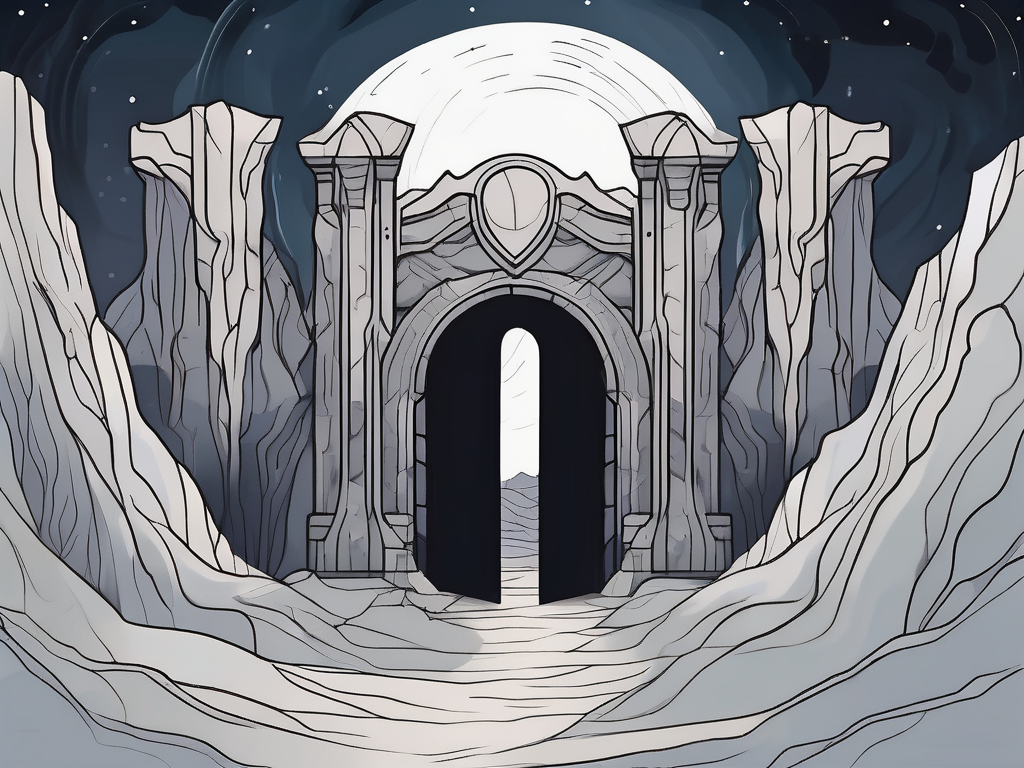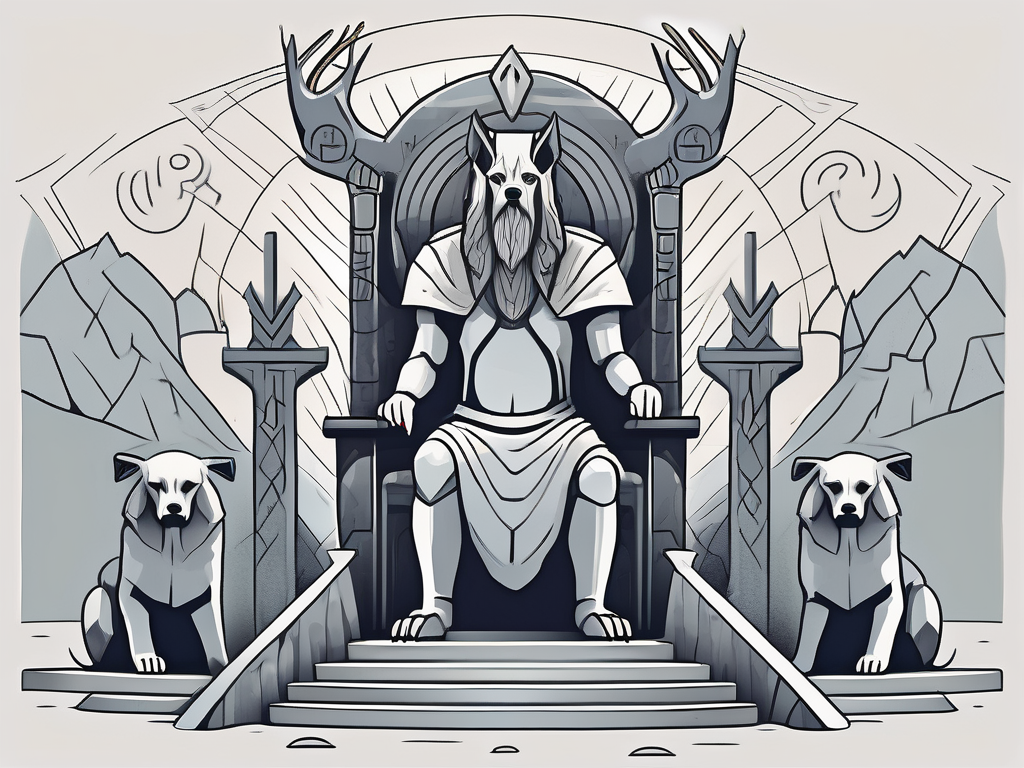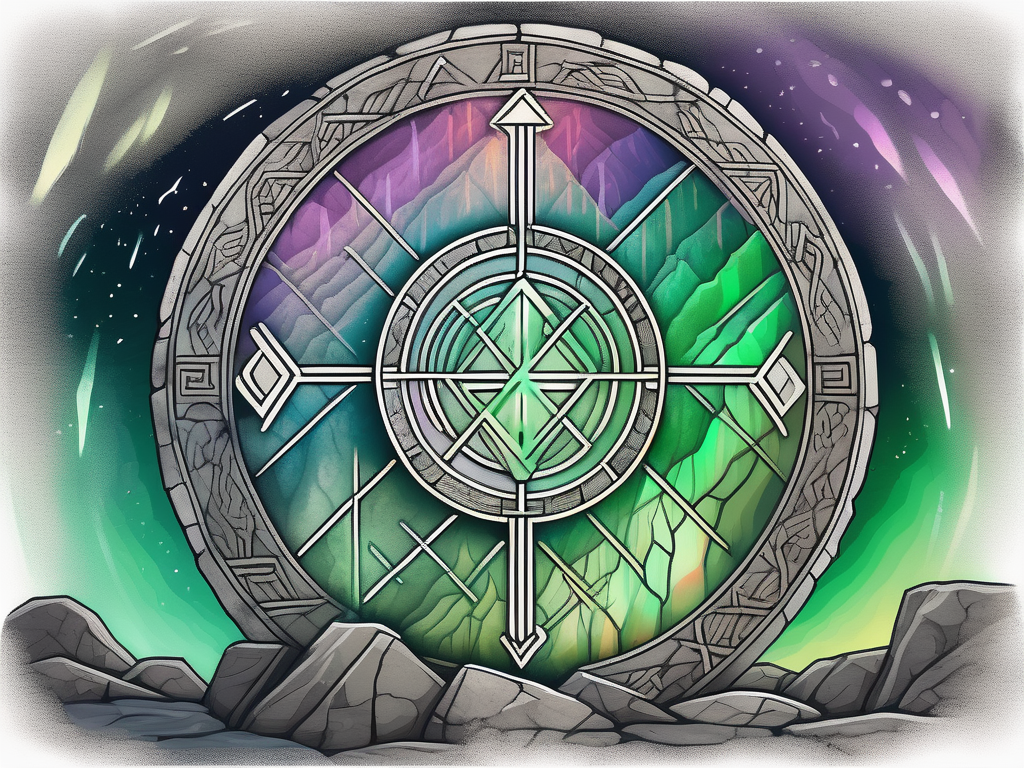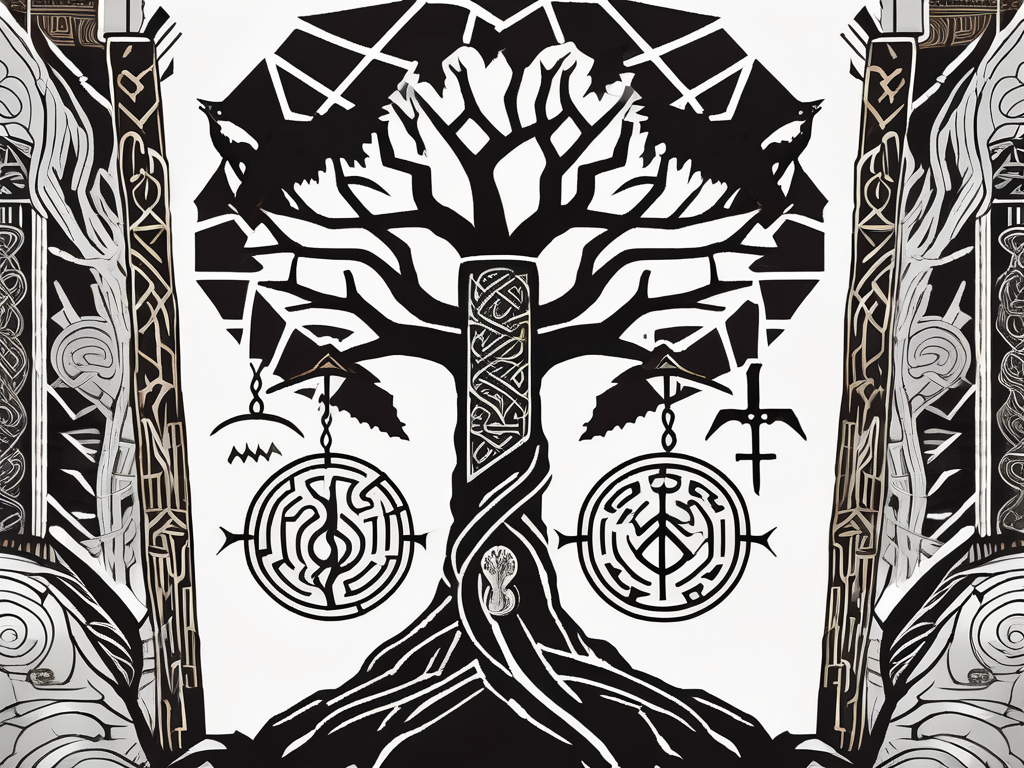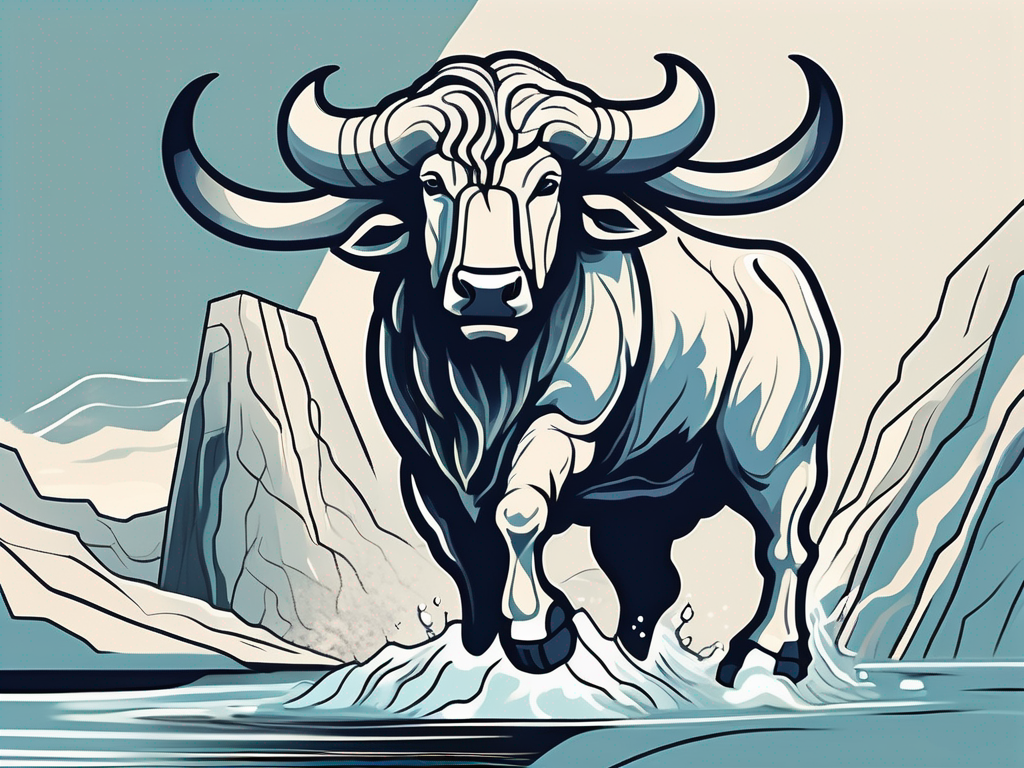In Norse mythology, the realm of Hel is a fascinating and mysterious place. Hel, the god of death, holds a prominent role in Norse folklore and has intrigued scholars and enthusiasts for centuries. In this article, we will dive deep into the realm of Hel, uncovering its origins, the significance of Hel in Norse mythology, the characteristics of Hel’s realm, and the influence the god of death has had on modern culture. So, grab your horn of mead and let’s embark on this mythological journey!
Understanding Norse Mythology
Norse mythology is a rich tapestry of tales and legends that originated from the Germanic peoples of Scandinavia. It encompasses a vast array of gods, goddesses, heroes, and mythical creatures, each with their own fascinating stories. Norse mythology provides a glimpse into the belief system and cultural values of the ancient Norse societies, shedding light on their views on life, death, honor, and the cosmos.
The Norse people held a deep reverence for their gods and goddesses, viewing them as powerful beings who controlled various aspects of the world. For example, Thor, the god of thunder, was believed to control the weather and protect humans from harm. His mighty hammer, Mjölnir, was said to be able to level mountains and defeat giants. The tales of Thor’s adventures, such as his battles with the giants and his quest to retrieve his stolen hammer, are some of the most well-known in Norse mythology.
Another prominent figure in Norse mythology is Loki, the trickster god. Loki was known for his cunning and mischievous nature, often causing trouble for both gods and humans alike. Despite his mischief, Loki was also a complex character who played a vital role in many of the mythological stories. He was responsible for the death of the beloved god Baldr, which led to a series of events that ultimately resulted in the destruction of the gods during the apocalyptic event known as Ragnarök.
The Origins of Norse Mythology
The origins of Norse mythology can be traced back to the pre-Christian era, when the ancient Norse people relied on oral traditions to pass down their mythological tales. These stories were an integral part of their cultural heritage and were often recited during gatherings and celebrations. The oral tradition allowed for flexibility and variation in the retelling of the stories, resulting in different versions and interpretations of the myths.
It was not until the Viking Age that Norse mythology began to be recorded in written form. The Poetic Edda, a collection of Old Norse poems, and the Prose Edda, a prose narrative that provides a more comprehensive overview of the mythology, were two of the primary sources for the written record of Norse myths. These texts were likely written by scholars and poets who sought to preserve the ancient stories for future generations.
One of the most famous poems in the Poetic Edda is the Völuspá, which recounts the creation of the world, the lives of the gods and goddesses, and the impending doom of Ragnarök. This poem provides valuable insights into the cosmology and worldview of the ancient Norse people, as well as the cyclical nature of life and death.
Key Figures in Norse Mythology
Norse mythology boasts a colorful cast of characters that captivate the imagination. From the mighty Thor, god of thunder, to the cunning Loki, the trickster god, and the wise Odin, the ruler of the gods, these figures shape the mythological landscape and embark on epic adventures that capture the essence of Norse folklore.
Odin, often referred to as the Allfather, was the chief god in Norse mythology. He was associated with wisdom, knowledge, and magic. Odin was known for his insatiable thirst for knowledge and his willingness to sacrifice himself in pursuit of wisdom. He was also the god of war and death, presiding over the fallen warriors in Valhalla, the great hall of the slain.
Freya, the goddess of love, beauty, and fertility, was another prominent figure in Norse mythology. She was known for her stunning beauty and her ability to shape-shift into a falcon. Freya was associated with desire and passion, and she played a crucial role in the mythological stories, often using her charms and wits to aid the gods in their quests.
These are just a few examples of the many fascinating figures in Norse mythology. Each god, goddess, and hero has their own unique characteristics and stories, contributing to the intricate tapestry of Norse folklore.
The God of Death in Norse Mythology
Among the many gods and goddesses of Norse mythology, Hel stands out as the deity responsible for the realm of the dead. While often associated with a morbid and terrifying concept, Hel fulfills a vital role within the mythological framework.
Hel, the daughter of Loki, takes charge of the realm that shares her name. Unlike other gods and goddesses, her realm is not a place of punishment or reward but a neutral ground where all souls, regardless of their deeds in life, find their eternal resting place. With her half-living, half-dead appearance, Hel symbolizes the natural order of life and death.
Ancient texts often describe Hel as a being with a ghastly appearance, half of her body appearing as a living woman while the other half shows the decay and darkness of death. This haunting image perfectly captures the duality that Hel represents, serving as a bridge between the realms of the living and the dead.
The Origins and Genealogy of Hel
To truly understand the significance of Hel in Norse mythology, it is important to explore her origins and genealogy. Hel is the daughter of Loki, the trickster god, and the giantess Angrboða. This unique parentage sets Hel apart from other gods and goddesses, as she embodies both divine and monstrous qualities.
Hel’s siblings include the mighty wolf Fenrir and the serpent Jormungandr, both of whom play important roles in the events leading up to Ragnarok, the apocalyptic battle that marks the end of the Norse gods. This familial connection further emphasizes Hel’s position as a powerful and influential figure in the mythological pantheon.
Furthermore, Hel’s name itself holds significance. The word “Hel” is derived from the Old Norse term “Helheimr,” which translates to “house or realm of Hel.” This name reflects the nature of her domain, a realm that encompasses all who have passed away, regardless of their actions in life.
The Realm of Helheimr
Helheimr, the realm governed by Hel, is a mysterious and enigmatic place. It is often described as a desolate and cold land, shrouded in perpetual darkness. Souls who find themselves in Helheimr experience a state of existence that is neither joyful nor torturous, but rather a state of eternal neutrality.
Within Helheimr, souls are said to reside in various sections, depending on their cause of death or their status in life. These sections include areas for warriors who died in battle, those who died of old age, and even those who died due to illness or accidents. Hel’s realm is a place of inclusivity, where all souls are welcomed and find their rightful place.
It is important to note that Helheimr is not the final destination for all souls. In Norse mythology, there are other realms such as Valhalla, where fallen warriors are taken, and Folkvangr, the realm of the goddess Freyja, where half of the slain warriors go. Helheimr, however, remains a crucial part of the afterlife, providing a resting place for the majority of souls.
Hel’s Role in Ragnarok
While Hel’s primary role is to govern the realm of the dead, she also plays a significant part in the events leading up to Ragnarok. According to Norse mythology, during the apocalyptic battle, Hel will lead an army of the dead, including fallen heroes and warriors, to join the forces of chaos and destruction.
Hel’s participation in Ragnarok highlights her dual nature as both a guardian of the dead and a harbinger of doom. As the battle unfolds, Hel’s forces will clash with the gods and heroes, resulting in a cataclysmic confrontation that will reshape the world and lead to the eventual rebirth of a new era.
It is through this involvement in Ragnarok that Hel’s significance as a deity is truly emphasized. She represents not only the cycle of life and death but also the transformative power of destruction and renewal.
The Realm of Hel in Norse Mythology
The realm of Hel, also known as Helheim, is a unique and enigmatic place. It is neither a paradise nor a realm of punishment but a realm of neutrality where all souls eventually find themselves after death.
Description and Characteristics of Hel’s Realm
Helheim is often described as an icy and desolate realm, with towering walls guarded by fierce hounds. The souls residing there lead a somber existence, devoid of joy but also free from suffering. It is a realm of reflection and a place where souls come to terms with their earthly lives.
The Journey to Hel’s Realm
In Norse mythology, reaching Hel’s realm is no easy task. Souls must undertake a treacherous journey through dangerous landscapes and face various trials and tribulations. Only the bravest and most deserving souls are deemed worthy of entering Hel’s realm.
The Influence of Hel on Modern Culture
Hel’s presence extends far beyond the realm of Norse mythology, permeating various forms of art, literature, and popular culture. Her enigmatic nature and association with death continue to captivate and inspire modern audiences.
Hel in Literature and Popular Media
Hel’s influence can be seen in various works of literature and popular media. From Neil Gaiman’s “American Gods” to Marvel’s cinematic universe portrayal of Hela, the goddess of death, Hel’s character has become synonymous with themes of mortality, redemption, and the human condition.
The Impact of Hel on Modern Beliefs and Practices
Many modern belief systems and practices draw inspiration from Norse mythology and incorporate elements of Hel’s realm and her role as the god of death. These range from neo-pagan religions embracing the Norse pantheon to artistic expressions that explore the realms of life and death.
Debunking Misconceptions about Hel
Despite her prominence in Norse mythology, Hel has often been misunderstood or oversimplified. Let’s unravel some common misconceptions surrounding the god of death.
Common Misunderstandings about Hel
One common misconception is that Hel is an evil entity or a force of malevolence. In reality, she embodies a necessary aspect of existence, representing the natural cycle from life to death. Hel is, above all, a neutral deity who fulfills an essential role in maintaining cosmic balance.
The Truth about the Norse God of Death
Understanding the truth about Hel allows us to appreciate her significance within the tapestry of Norse mythology. Her portrayal as a complex and multifaceted deity contributes to our understanding of ancient Norse beliefs and their recognition of life’s impermanent nature.
So, as we conclude our exploration of the realm of Hel, we are left with a profound appreciation for the complexity and depth of Norse mythology. The god of death, Hel, reminds us of the delicate balance between life and death and encourages us to embrace the transient nature of our existence. With her enduring influence on modern culture, the legacy of Hel continues to shape our collective understanding of life, death, and the realms beyond.
